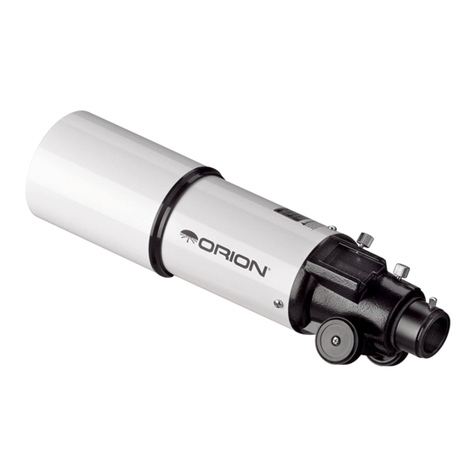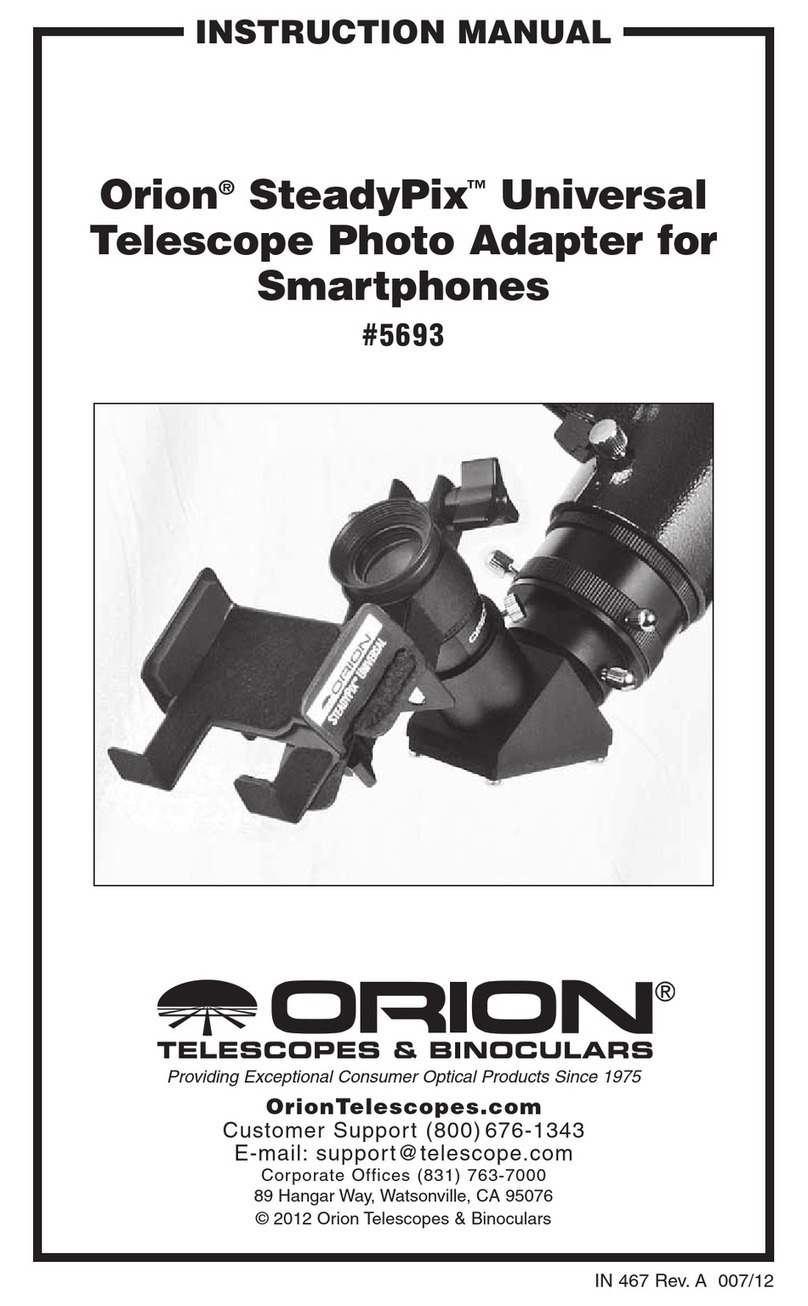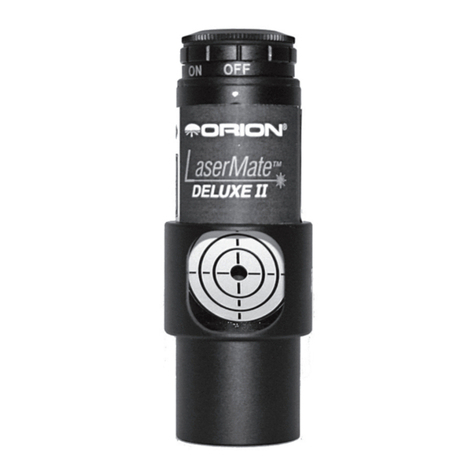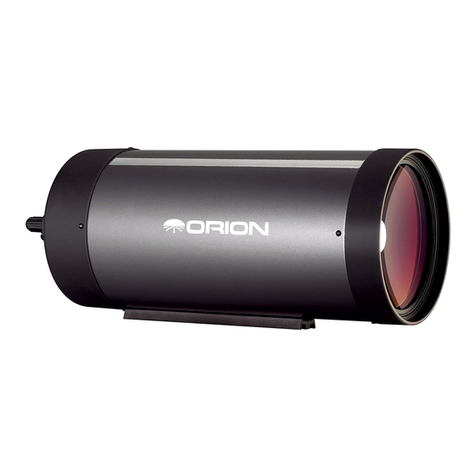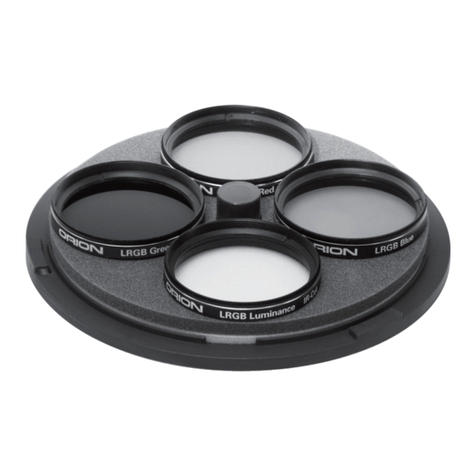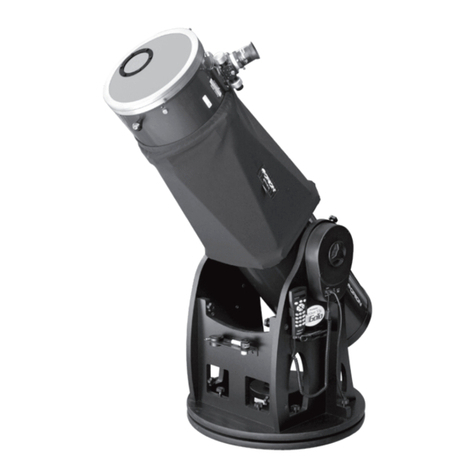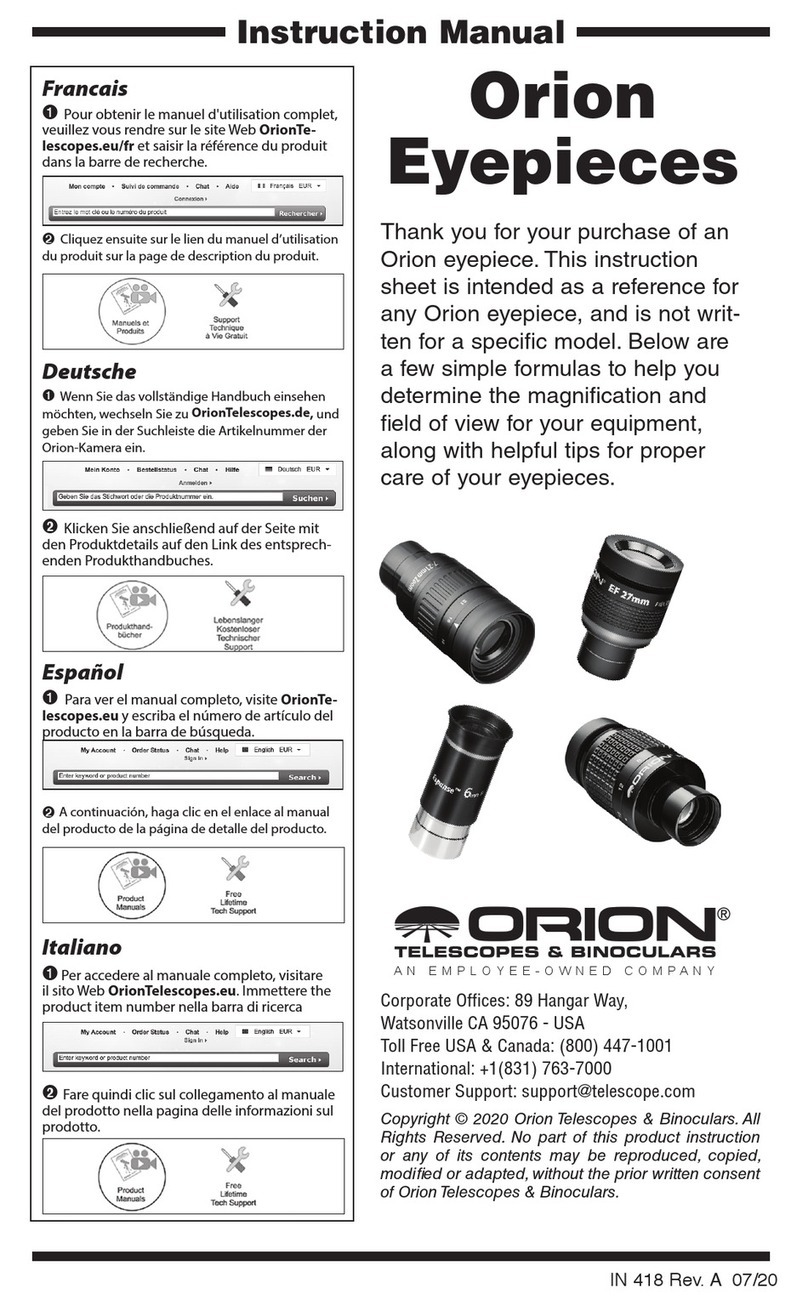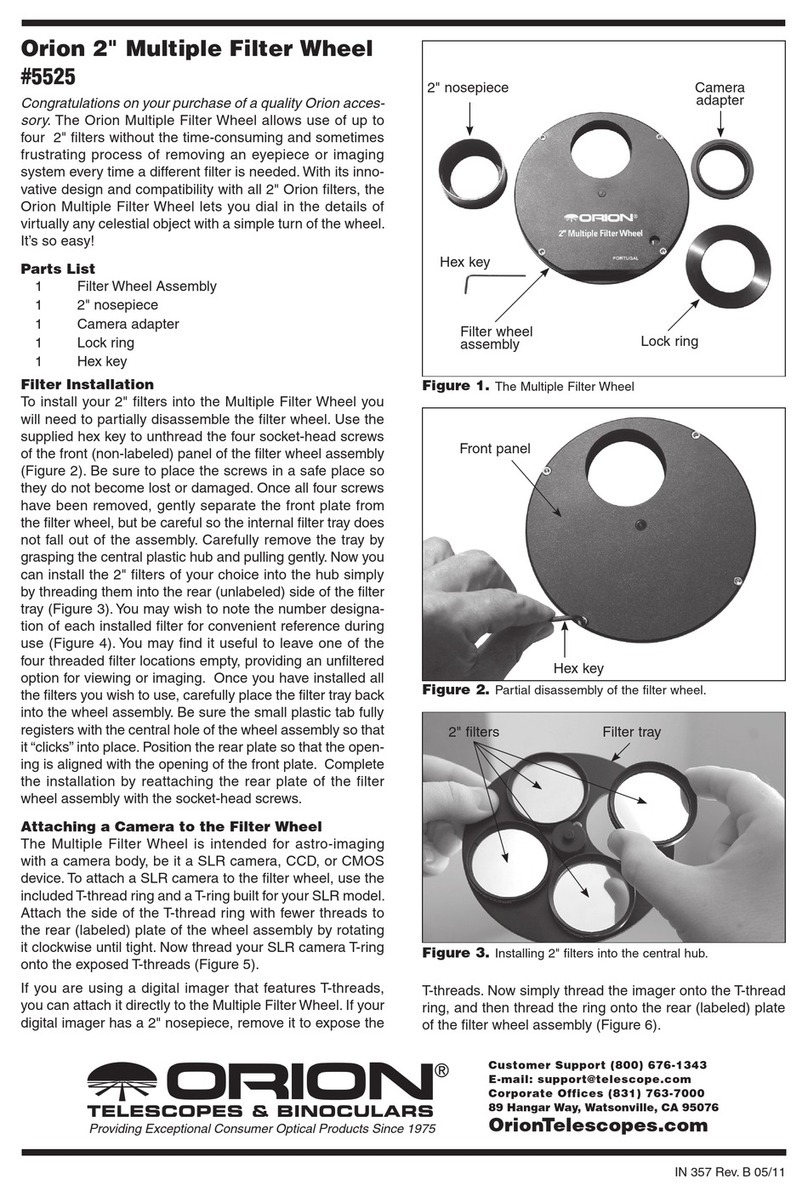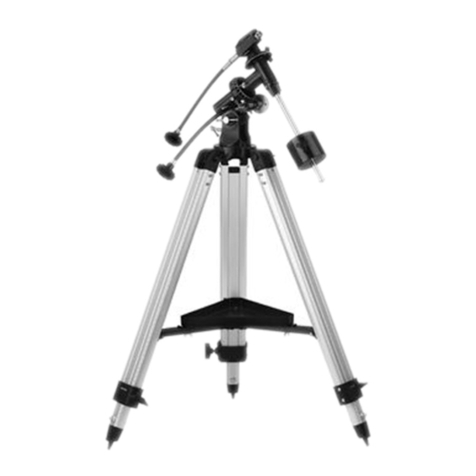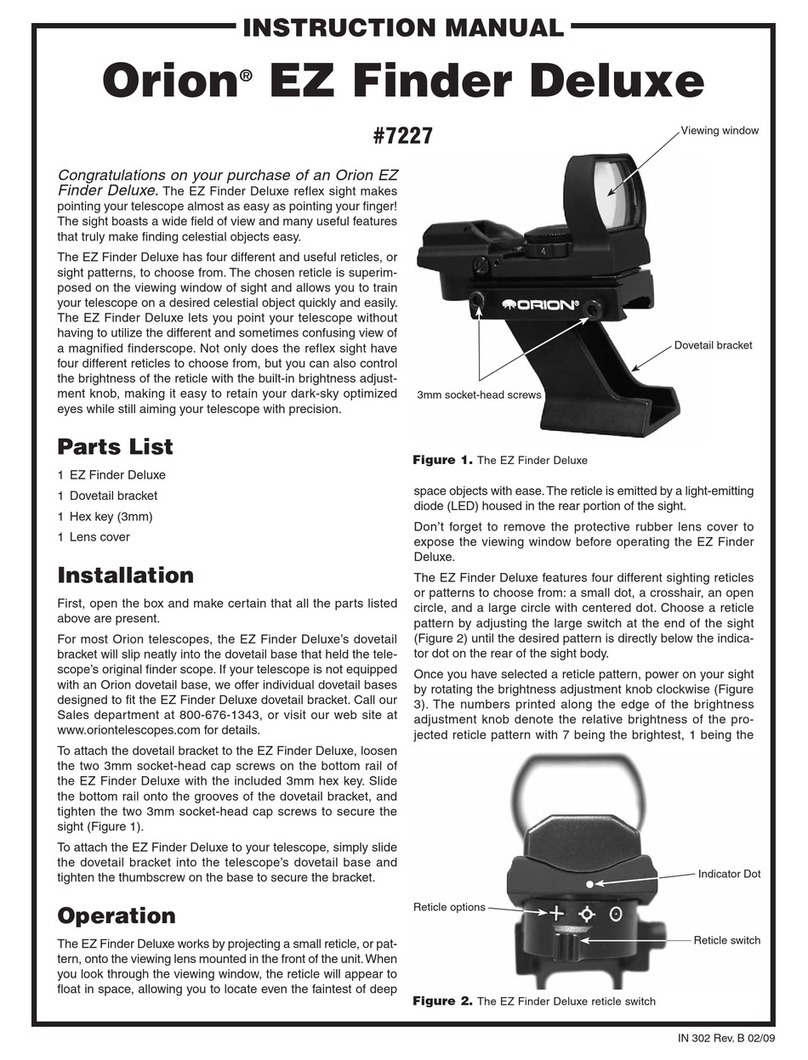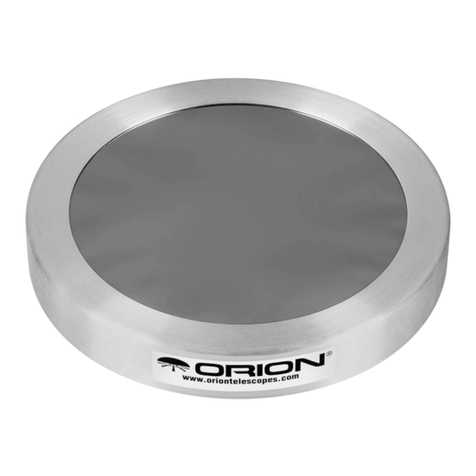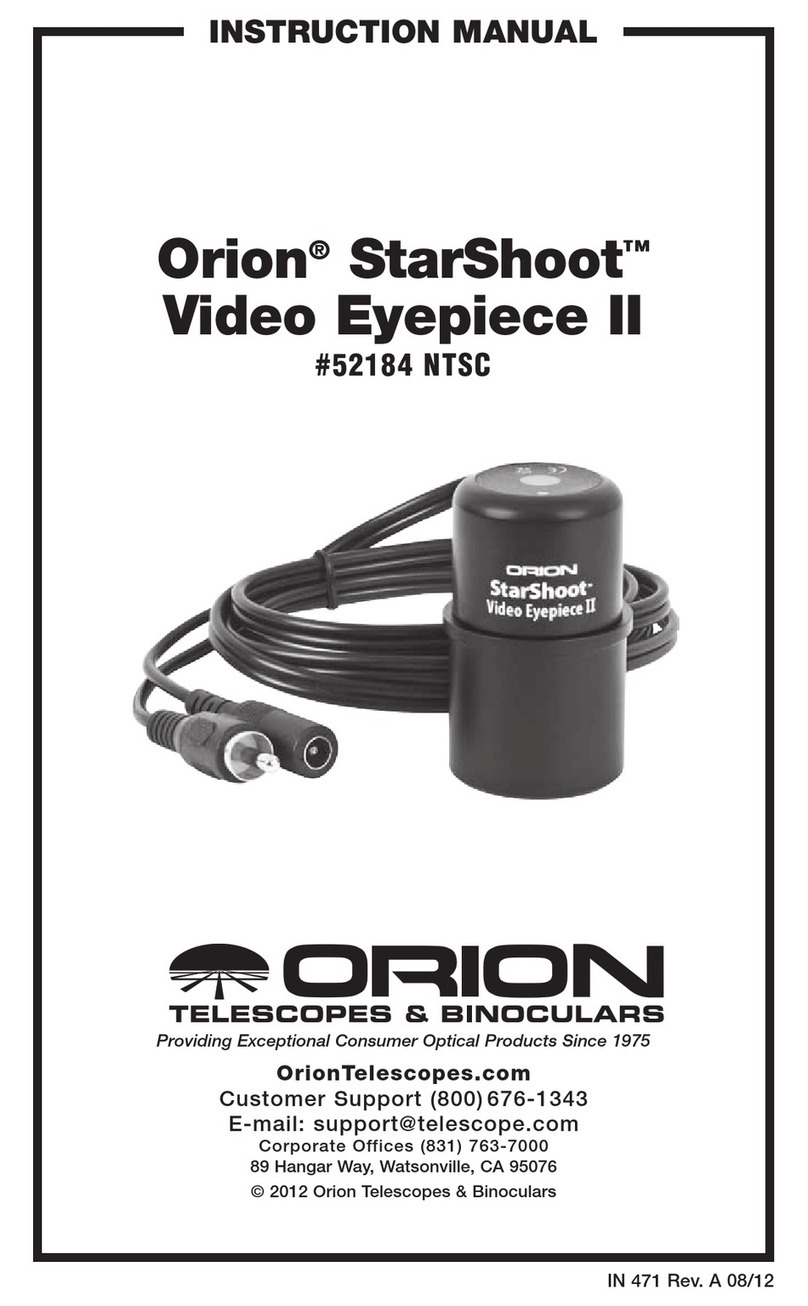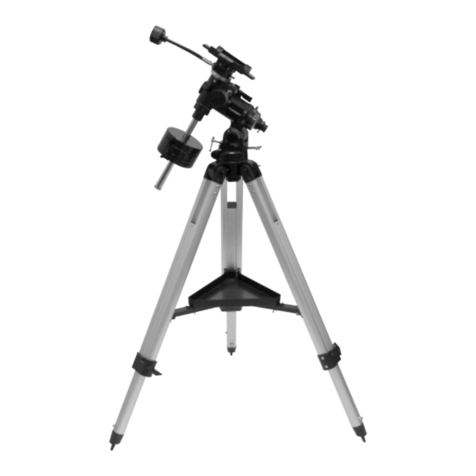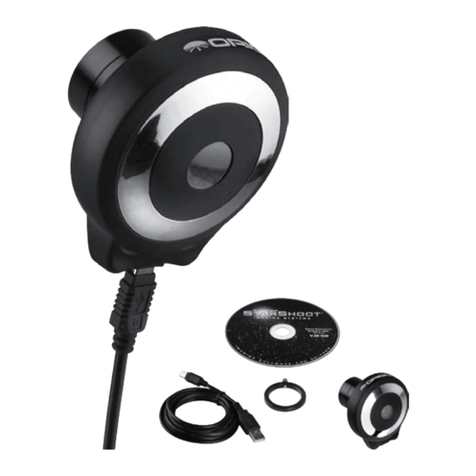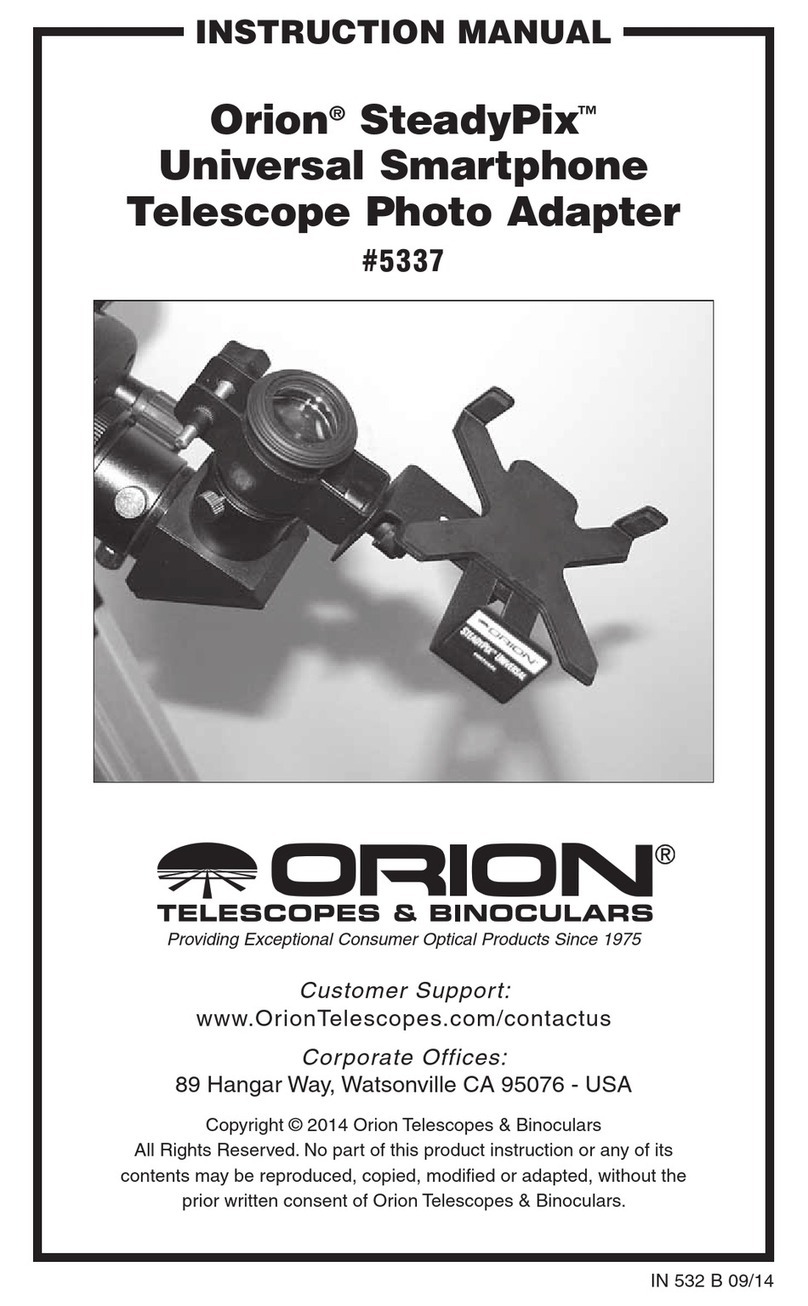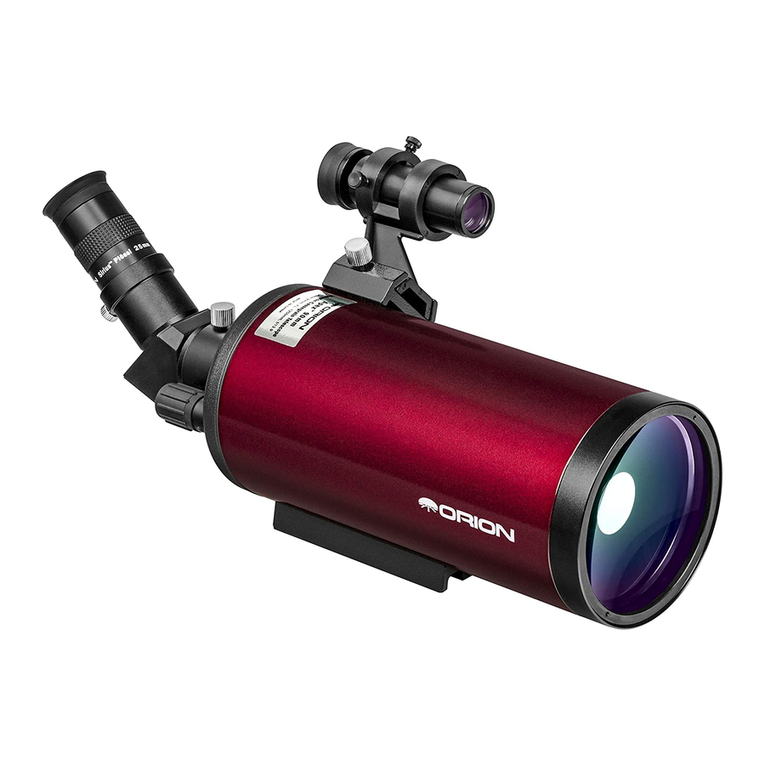
9
5. Make sure that the polar scope is aligned with the RA
Axis. If it is not, follow the procedure in the following sec-
tion, “Aligning the Polar Scope”.
6. Use the latitude and azimuth adjustments on the mount
(see Figure 14) to move it incrementally while viewing
through the polar scope, until you can see Polaris in the
eld of view. It doesn’t matter where it is in the eld of view
at this point; you will make ne adjustments to position
Polaris where it needs to be in a moment.
Note: For the azimuth adjustment knobs, turn one clock-
wise and the other counterclockwise the same amount,
or vice versa. For latitude adjustment, loosen the latitude
lock knob slightly, then turn the latitude adjustment T-bolt
counterclockwise to raise the mount or clockwise to lower
the mount. Then retighten the latitude lock knob.
Note the constellation Cassiopeia (looks like a W) and
the Big Dipper in the reticle (Figure 13). They do not
appear in scale, but they indicate the general positions
of Cassiopeia and the Big Dipper relative to the north
celestial pole (which is indicated by the cross at the cen-
ter of the reticle). Rotate the reticle so the constellations
depicted match their current orientation in the sky when
viewed with the naked eye. To do this, release the R.A.
lock lever and rotate the main telescope around the R.A.
axis until the reticle is oriented with sky. For larger optical
tubes, you may need to remove the tube from the mount
to prevent it from bumping into the mount. Once the reticle
is correctly oriented, use the right ascension lock lever to
secure the mount’s position.
7. Now use the azimuth adjustment knobs and the latitude
adjustment T-bolt (Figure 14) to position the star Polaris
inside the tiny circle on the “railroad track” ring. You may
rst need to very slightly loosen the central support shaft
underneath the equatorial mount, to allow it to rotate.
Once Polaris is properly positioned in that small circle
on the reticle, you are polar aligned. If you do not have
a clear view of Polaris from your observing site, you will
not be able to use the polar-axis nder to polar align the
telescope.
Note: From this point on in your observing session, you
should not make any further adjustments in the azimuth
or the latitude of the mount, nor should you move the
tripod. Doing so will undo the polar alignment. The tele-
scope should be moved only about its right ascension
and declination axes.
For observing in the Southern Hemisphere
1. Set the mount’s latitude to the local latitude.
2. Move the tripod so the mount’s RA axis points roughly in
the direction of the South Celestial Pole.
3. In the polar scope’s eld of view (Figure 13), there are
three labeled stars and the unlabeled “cross” asterism of
Crux, the Southern Cross, which will act as guideposts
for alignment in southern hemisphere.They do not appear
in scale, but they indicate the general positions of these
stars relative to the south celestial pole (SCP). Release
the R.A. lock lever and rotate the main telescope around
the R.A. axis until the stars in the polar scope’s reticle are
oriented the same as those in the sky. For larger optical
tubes, you may need to remove the tube from the mount
to prevent it from bumping into the mount. Once the reticle
is correctly oriented, use the right ascension lock lever to
secure the mount’s position.
4. Use the latitude adjustment bolt and the two azimuth
adjustment knobs on the mount (see Figure 14) to ne-
tune the alignment of the stars in the sky with those on the
reticle.
Note: For the azimuth adjustment knobs, turn one clock-
wise and the other counterclockwise the same amount, or
vice versa. You may rst need to very slightly loosen the
central support shaft underneath the equatorial mount, to
allow it to rotate. For latitude adjustment, loosen the lati-
tude lock knob slightly, then turn the latitude adjustment
T-bolt counterclockwise to raise the mount or clockwise
to lower the mount. Then retighten the latitude lock knob.
The mount is now polar aligned.
Note: From this point on in your observing session, you
should not make any further adjustments in the azimuth
or the latitude of the mount, nor should you move the
tripod. Doing so will undo the polar alignment. The tele-
scope should be moved only about its right ascension
and declination axes.
Aligning the Polar Scope
Before using the polar scope for polar alignment for the rst
time, you should check that the polar scope is aligned to the
mount’s RA axis. If it isn’t, you will want to make adjustments to
its alignment. At the center of the reticle is a cross, which you’ll
use in the procedure below to align the polar scope.
1. Look through the polar scope at a distant object (during
the day) or at Polaris (at night, in Northern Hemisphere)
and center it on the cross in the middle of the reticle. You
may need to turn the latitude adjustment T-bolt and the
azimuth adjustment knobs of the mount and even move
the tripod itself to do this.
2. Rotate the mount 180° about the RA axis. It may be con-
venient to remove the optical tube and counterweight(s)
before doing this. If the object remains centered on the
cross after the rotation, then the polar scope is properly
aligned to the RA axis and no adjustment is needed.
3. If the target deviated from the cross, then use a 1.5mm
Allen wrench to adjust the three small Allen screws on
the polar scope (Figure 16A) to move the target half the
distance back to the cross. Then you will re-center the
object on the cross as in Step 1 using the mount’s azimuth
adjustment knobs and the latitude adjustment T-bolt (with-
out moving the tripod this time).
4. Repeat Steps 2 to 4 until the object stays centered on the
cross of the reticle when rotating the mount 180° on the
RA axis.
NOTE:
• When adjusting the Allen screws, rst loosen one screw
only ¹⁄8of a turn, and then lightly tighten the other two.
• Do not over tighten the Allen screws as it might damage
the reticle plate in the polar scope.
